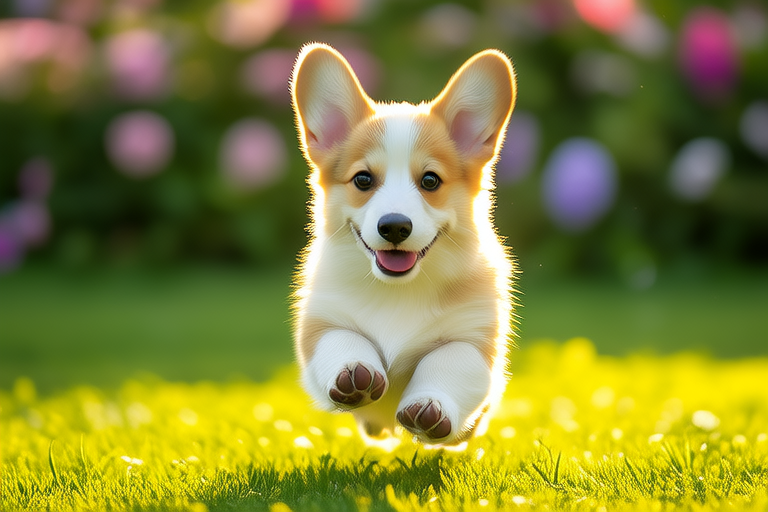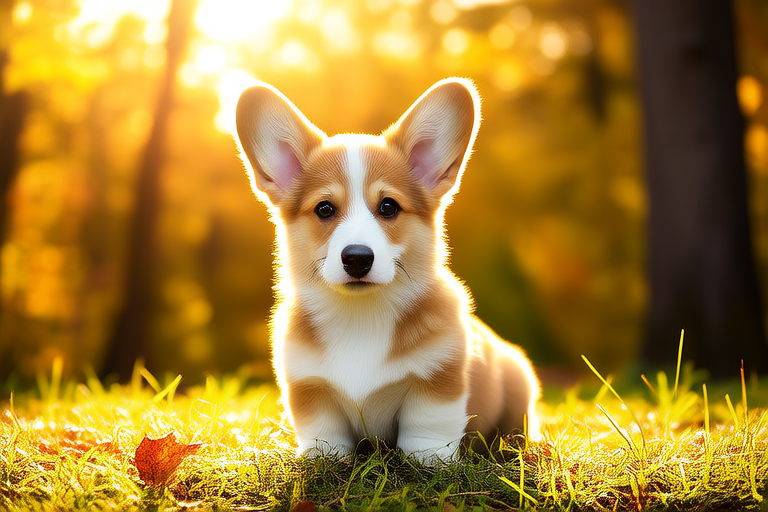
How the Wiggly Tail of a Corgi Can Brighten Your Day!
Introduction:
There’s something undeniably charming about the way a Corgi wags its tail. Whether it’s the joyful exuberance after a walk or the gentle swish as they settle down for a nap, the tail of a Corgi is more than just a furry appendage; it’s a beacon of happiness. This article delves into the unique qualities of Corgi tails, their positive impact on people’s moods, and offers tips on how to best interact with these delightful dogs to maximize the uplifting effects.
The Unique Qualities of a Corgi’s Tail
Corgis, known for their short stature and long bodies, have tails that play a significant role in their overall appearance and behavior. Their tails are often described as fox-like, tapering gently from their body and ending in a slight curve. The length of the tail can vary, but it’s typically in proportion to their body size, adding to their endearing charm. Unlike some other breeds, Corgis don’t have a fluffy, bushy tail that might obscure their movements. Instead, their tails are sleek and flexible, making them perfect for expressing a wide range of emotions.
The position of a Corgi’s tail can also indicate their mood. A high, stiff tail suggests excitement or alertness, while a low, relaxed tail indicates contentment. When a Corgi is wagging its tail, it’s usually a sign of happiness, curiosity, or even playful anticipation. Understanding these subtle cues can help you better connect with your Corgi and respond appropriately to their emotional states.
Scientific Insights into Tail Wagging
Wagging tails are not just adorable; they serve a biological purpose as well. Research has shown that tail wagging is linked to the release of oxytocin, often referred to as the “love hormone.” Oxytocin plays a crucial role in social bonding and emotional well-being. When a Corgi wags its tail, it triggers the release of oxytocin in both the dog and the person interacting with it, creating a mutual feeling of warmth and connection.
A study conducted by researchers at Azabu University in Japan found that when people looked at photos of dogs wagging their tails, their brain activity increased in areas associated with empathy and positive emotions. This suggests that the simple act of seeing a Corgi wag its tail can have a therapeutic effect on humans. Moreover, the frequency and intensity of tail wagging can vary based on the dog’s emotional state, providing valuable insights into their mental health and well-being.
Anecdotes of Corgis Bringing Joy
Many pet owners have shared stories of how their Corgis have brightened their days through their enthusiastic tail wagging. Sarah, a busy working mother, recalls one particularly tough day when she came home exhausted. Her Corgi, Max, greeted her at the door with his signature tail wag, which instantly lifted her spirits. “It was like he knew exactly what I needed,” Sarah says. “He followed me around the house, wagging his tail the entire time, and before I knew it, I was smiling again.”
Another story comes from John, who adopted a Corgi named Bella after losing his job. Bella’s constant companionship and cheerful tail wagging helped him cope with the stress and uncertainty of his situation. “Bella’s presence was a constant reminder that there’s still joy in life,” John says. “Her tail wagging was like a little burst of sunshine every time I saw it.”
Interacting with Corgis to Maximize Uplifting Effects
To fully appreciate the uplifting effects of a Corgi’s tail, it’s important to interact with them in ways that encourage positive behavior. Here are some tips to help you strengthen your bond with your Corgi and enhance their tail-wagging moments:
- Playtime: Engaging in play is one of the best ways to get a Corgi’s tail wagging. Whether it’s a game of fetch, tug-of-war, or simply chasing after a toy, playtime provides an outlet for their energy and encourages happy, excited behavior. Make sure to set aside time each day for play sessions, as this will not only keep your Corgi physically fit but also mentally stimulated.
- Positive Reinforcement: Reward your Corgi for good behavior with treats, praise, and affection. Positive reinforcement training can help reinforce desirable behaviors, such as tail wagging, and make your interactions more enjoyable for both you and your dog. By associating positive experiences with tail wagging, you can create a stronger bond with your Corgi.
- Quality Time: Spend quality time with your Corgi by taking them on walks, cuddling on the couch, or simply sitting together in silence. These moments of connection can help strengthen your bond and encourage your Corgi to display more positive behaviors, including tail wagging. Quality time also provides an opportunity for you to observe your Corgi’s body language and respond to their needs accordingly.
- Consistency: Consistency in your interactions with your Corgi is key to maintaining a strong bond. Regular routines, such as daily walks, feeding times, and play sessions, can help your Corgi feel secure and confident, leading to more frequent and genuine displays of happiness, including tail wagging. Consistency also helps establish trust between you and your Corgi, making it easier to understand and respond to their emotional cues.
Conclusion
The wiggly tail of a Corgi is more than just a cute feature; it’s a powerful tool for spreading joy and improving our moods. Through their expressive tails, Corgis communicate their happiness, excitement, and contentment, creating a sense of connection and warmth between themselves and their human companions. By understanding the unique qualities of Corgi tails and interacting with them in positive ways, we can deepen our bond with these wonderful dogs and enjoy the many benefits of their uplifting presence.
So, the next time you see a Corgi wagging its tail, take a moment to appreciate the magic in that simple gesture. It just might be the little bit of sunshine you need to brighten your day!






